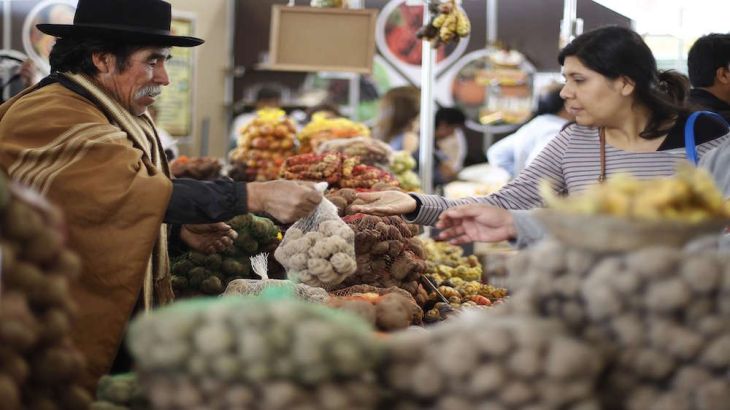
Lima: Peru’s food revolution
As Peru struggles to define its modern self, are the country’s culinary traditions the key to a better future?
Lima, the capital of Peru, is a sprawling metropolis of about 10 million people.
Known as the “city of kings”, it was founded by the Spanish conquistadors in the 16th century and became an important centre of the Spanish empire in South America.
Keep reading
list of 4 itemsFire engulfs iconic stock exchange building in Denmark’s Copenhagen
Inside the pressures facing Quebec’s billion-dollar maple syrup industry
‘Accepted in both [worlds]’: Indonesia’s Chinese Muslims prepare for Eid
Peruvian food is known as one of the best in Latin America. Over generations, people from around the world have settled in the vibrant city, resulting in a mix of cultures and cuisines.
A primary ingredient of the Peruvian cuisine is the potato, which was grown there more than 7,000 years ago. It has thousands of native varieties, each with its own unique taste and nutritional value.
“The potato represents a culture of subsistence. It’s like a mother that supports and sustains you, this is the way we look at it,” says food expert Isabel Alvarez.
Alvarez explains that native Andean food, once only found in the mountainous heartland, has become very popular with Lima’s urbanites.
When she started studying Peruvian food in the 1980s, the Andean mountain regions were still geographically and politically isolated and their traditional food was not available in Lima’s markets. But things have changed and markets such as the Magdalena market offer an incredible variety of food and spices from all over the country.
“I believe Peru is a true melting pot of cultures and you can see that in the food,” says Alvarez, referring to a new wave of Andean cuisine that is contemporary and yet faithful to its roots.
“The new Andean cuisine is a new terminology that is being used to define the Andean cuisine revisited with international techniques. I think that this resurgence is making Peruvians feel closer to their land and proud of who they are. Our self-esteem has been lying low for centuries. I think that our food unites all Peruvians like a good mother does and reminds us of who we are,” Alvarez says.
Previously Lima was not much more than a transit point for tourists going to the ancient city of Cusco and the magnificent ruins of Machu Picchu. But the tourism industry has grown and tourists are spending more time and money in Lima’s restaurants.
Many Limenos are proud of their food and believe it is helping to forge a new sense of national identity – especially after decades of military rule and a brutal war that killed up to 68,000 and caused many to move to the urban centres to escape violence and poverty.
“When this started, three quarters of the population lived in the countryside. By the time it ended, meaning today, three quarters of the people in Peru live in 11 cities, a third of the population in Lima. and all these people not just changed their geography, they changed their language, they changed a lot of their culture … For Peru, this has been the most important human and cultural experience. The people that moved to the cities when violence really struck are victims. And even today, they can’t really mix and merge with the modern part of the city,” says journalist Mirko Lauer.
Peru’s economy may be booming and the status of the nation’s cuisine on the rise, but poverty is still rife. Gloria Villanueva Reyes is one of thousands of women working in Peru’s many community kitchens providing the poor with food.
“I am proud that our food is now famous but I feel bad at the same time because there are too many people who don’t have the chance to eat it. If it would reach everybody, happiness would be complete. Unfortunately, we only see those recipes on television,” she says.
Peru is a country full of contradictions and it is struggling to define its modern self. But with the emergence of cooking schools across the country, many young Peruvians hope to be able to contribute to the new wave of Andean cuisine and create a new gastronomic future for their families and their country.
So are Peru’s culinary traditions the key to a better future?
Editor’s note: This film was first broadcast on Al Jazeera English in 2008.
![A cook prepares a traditional dish known as Ceviche during the Mistura gastronomic fair in Lima [Enrique Castro-Mendivi/REUTERS]](/wp-content/uploads/2016/06/61dc02a8afbd48b585c6ee51859e9296_18.jpeg)